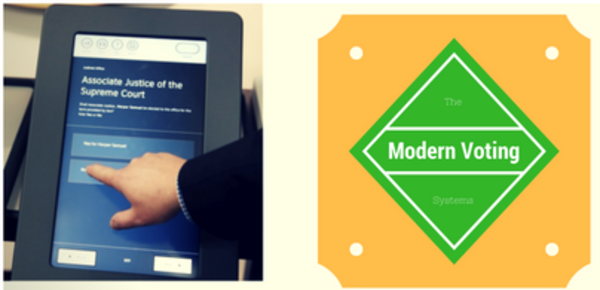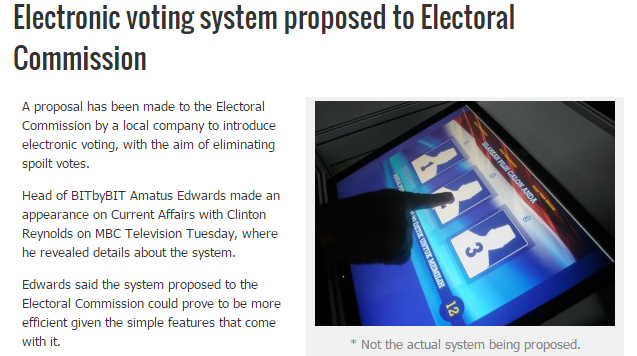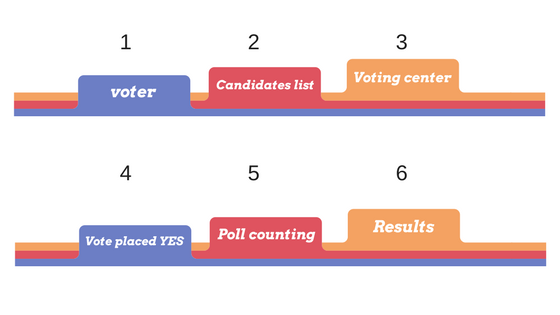The Modern Voting Systems
The machine used for registration of votes and tabulation of the data is known as a Voting Machine. The very 1st versions were mechanical but slowly with advancement of technology, voting machines have certainly come a long way. Currently, automatic electronic machines have replaced the mechanical ones and are highly advanced in terms of security and efficiency. Traditional systems were categorized on the basis of their working principle and their ability to determine the location from where the votes have been casted.

History
In 1838, the Chartists first proposed the idea of the usage of voting machines in an election. Voters had to drop a brass ball in a hole which had the candidate’s name specified to it. In1875, the first push-button voting machine was introduced by Henry Spratt. The most appropriate voting machine was designed my Anthony Beranek which was used in the US-general elections. It had a push button system with interlocks behind each row which prevented voters to cast more than one vote. The machine would reset itself as the voter left the booth.
A few technical stuffs
The following are the vote recording technologies that have been used over the years:
- Tabulated and manually marked ballots
- Document based ballot voting machine
- Punched card
- Electronic Input Devices
- Optical Scanners
- Electronic ballot marker
- Direct recording Voting Systems
- Public Network Direct-recording System.
The Automated Electronic Voting System
It is also known as e-voting where electronic components are used to count the number of votes. Internet services are integrated within the system for data transmission. Other forms of connectivity may include connectable household devices. The automated system has a set of standards which have been provided by a regulatory body.

A proper functioning automated electronic voting system must fulfill the following requirements.
- Integrity
- Security
- Privacy
- Scalability
- Accessibility
- Swiftness
- Cost-effectiveness
- Ecological sustainability.
Electronic Voting can be broadly classified into the following two types:
- E-voting: Government authorities supervise this type of voting at polling stations.
- I-voting: The voters can cast their votes from their home. This system has internet services integrated to it.
Electronic voting systems have been reported to possess security threats like default administration password. The system may even suffer from inconsistent and unpredictable errors. However, they can speed up the process of counting of votes and reduce the cost for manual counting.
The electronic voting system became popular amongst electorates in 1960. DRE voting machines are popular in many countries like India and Brazil which has the capability of counting and tabulating votes. Internet voting is highly popular in the Government and municipal elections of Canada, Estonia, Switzerland and France.
Paper-based Electronic Voting System
In a paper-based voting system, the votes were cast and counted manually. With the advancement of electronics, the marking was done by hand but electronic counting was possible. Punched card voting and digital pen voting systems were popular under this category. A ballot marking device can be included in this system for the users to choose their options via an input device. A touch screen comes in handy for easy selection of the voters. The ‘Dechert Design System’ was introduced in 2004 which was one of the most advanced paper-based electronic voting systems of its time.
Here below the image clearly shows the process.

Direct Recording Electronic Voting System
A DRE voting system comprises of a ballot display with mechanical or optical components that are activated by the voter. The ballot images and the voting data are stored in the memory components of the system. The voting data is available from the removable memory slot and as a printed copy as well. The tabulation process is done while the votes are being cast. These systems are equipped with advanced software which processes all the voting data. The DRE voting system is widely used in many countries for their government or municipal elections.
It helps to done the vote counting process fast and simple. This method has some bug issues when they used first time in virginia ballot and hackers made some damages using it.
Public Network DRE voting System
In this system, the voting data from one polling station is transmitted to another place over a public network. The data can be sent one at a time or in a batch during the day of the election. Internet voting and telephone voting are included under this category. Internet voting can be done from a capable computer from remote locations or from voting booths which are connected to a main server for analysis. Many organizations use internet voting on a regular basis to elect their board members and officers.
Conclusion
An automated system certainly does have its advantages over traditional voting systems. However, caution must be taken while setting up the device to avoid any malfunction. One of the major concerns of such a system is that it possesses security threats. A set of standards should be strictly followed during designing the machine. With its automatic data storage and counting properties, an automated electronic voting system simply overshadows a mechanical one.
